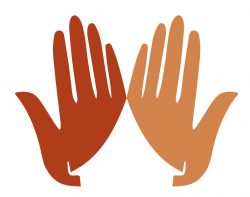This Monday, 19th August, we looked at Spirituality and the Mind in our meditation, Listen to the audio here or read the transcript below –
The Discussion
The led meditation
Sometimes, before we settle down to meditate it’s good to just get a view of our state of mind. To know what we are starting with.
Mostly, meditation will consist of lots of sessions where we feel mildly better afterwards but nothing particularly dramatic happens. That doesn’t matter. It builds up. It slowly changes us. It is therefore healthy and, actually, encouraging to keep checking in with ourselves.
How do we actually do this checking in? We can look at many aspects of this. One way to help us is to work with what we call the spiritual faculties. There are 5 of them. They are firstly arrange in to two pairs that are opposites to each other’s pairing. So we have what we call prajna. This translates to Wisdom. In this state of mind, we tend to be sitting in a cerebral place. Academic if you like. It is very much a thinking and reasoning state. The opposite of this state is what we call Sradda. In this state we are swayed towards faith and a feeling of letting go in the world. Now, hearing this, you may think that from what you’ve learnt about Buddhist practise, this may be the way to go. But actually no. In the extreme of this state, you will believe anything you see or read, happy to go along with it all. Your meditation will not be present. It will be lost in a trance like state. I’m not seeking to discredit any other system but this is more akin to Transcendental (TM) where we are seeing to come out of ourselves and enter this trance like state.
In Buddhist meditation, this is not our aim. So we have to balance this out with prajna. The mind has to be engaged and present. But, of course, too much prajna and we will be over-thinking our meditation experience. Meditation will be an academic process rather than one of true experience.
The other two opposites that we experience are Virya, which means energy, enthusiasm. This is incredibly important. It battles against sloth and torpor, gives us strong intent and keeps us going in our practise. Then we have Samadhi. This is the meditative states of concentration and absorption. Note that this ISNT Prajna. The concentration of prajna is applied thought. Samadhi is applied non thought. It is that deep sense of presence with the meditation subject. Of course this is a good thing. But if we have too much of this and too little Virja and we will be stable but lack lustre. Our meditation won’t be achieving anything. It will be a static thing without life. Meditation is not empty (controversial point. One of the outcomes of meditation is emptiness. But this is a realisation, not the experience of meditation itself. We will come back to this) Meditation has presence. It is alive. Those of you who study Tai Chi with me understand when I say we need life and tone in our tai chi. We don’t want blancmange tai chi. The same is true with meditation. It is a very active, engaged state of non-thinking.
But of course, if we have too much virja and not enough Samadhi, we will be fidgety and distracted. Not able to focus the mind.
The state sitting in the middle of these two opposites is smrti, mindfulness. Or rather, this is what is required to balance these other states out. I don’t see mindfulness as a resultant state. I see it as a practise that helps us to achieve a balanced mind.
So, all well and good but how does this sit with spirituality. Well, let’s do an exercise. Let’s say that there are two main types off spirituality. The first is very grounded, in touch with the earth and the body. I don’t have much knowledge of the American First Nation or some of the shamanic systems but they seem to be very grounded in earthly systems and are very connected with the body. Both these systems practise many approaches to medicine using natural herbs and incantations to help the body. Then there are spiritualities which are more heavenly. Looking up outside of ourselves. The universal nature of experience if you like. Christianity is more akin to this I would suggest. Actually, o religions or spiritualities seem to be more one than the other. All have elements of both. But both these elements are definitely there.
So, with this in mind, take a moment to check in with yourself. Ask yourself “what’s my spirituality? Is it grounded and inward or universal and outward”. There are no wrong answers here. Both are important and necessary. Don’t over think it. In fact. Don’t think in the traditional sense. Just feel!
……………….
So, remember which is you and what you are going to do is cultivate the opposite state in your meditation today
The meditation will be body scan and then just sitting. What will be important here is what you do with your internal gaze. Even with your eyes shut you can direct then up or down. Our direction of gaze actually triggers different areas of the brain. Looking up engages long term strategic thinking and seems to hook with ideas on universal awareness. Looking down engages with that grounded nature, short term planning and close concentration. Remember. Both are important. Don’t now change your choice with how you “want to be”. Stick with what the previous exercise told you.
So if you came out with a grounded nature, cast your eyes up in meditation. If you tend to be in a universal, external place, look down.

